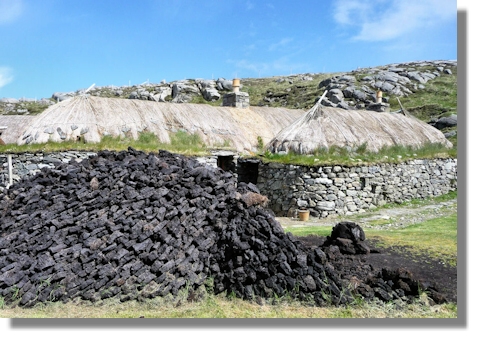Tam's Tall Tales
- Seaweed the Key to Rejuvenate Crofting?

Black House croft in Lewis with a peat stack in the foreground.
Seaweed the Key to Rejuvenate Crofting?
Ecologists from Scotland's Rural College (SRUC) and the University of Edinburgh have been studying "black land" crofts on the east coast of North Uist. They believe the ancient farming system, which incorporates seaweed, could be used on land in a much wider area.
The crofting counties make up 16 per cent of land in the UK. Today, 375,000 people and 5 million sheep live there, yet the area imports 95 per cent of its food. Between the 14th and 18th centuries the area was home to more than 500,000 people and was 90 per cent self-sufficient in food.
The researchers studied an old system of agriculture that used seaweed in North Uist. Dr Barbra Harvie, the lead author, said: "Most of this agricultural land has lain abandoned for more than 60 years. By interviewing crofters, we are gleaning knowledge. After researching historical crop rotations we have replicated these by hand-digging ridges and hauling seaweed from the coast.
"The ecological impacts of recultivating abandoned croftland are minimal compared with the carbon footprint associated with importing food from the mainland."
Seaweed is rich in potassium, magnesium and trace elements often lacking in modern fertilisers.
Please give me whatever feedback comes to mind via tamfromrampant@gmail.com.
Tam O'Ranter
March 2016Return to Tam O'Ranter Index



